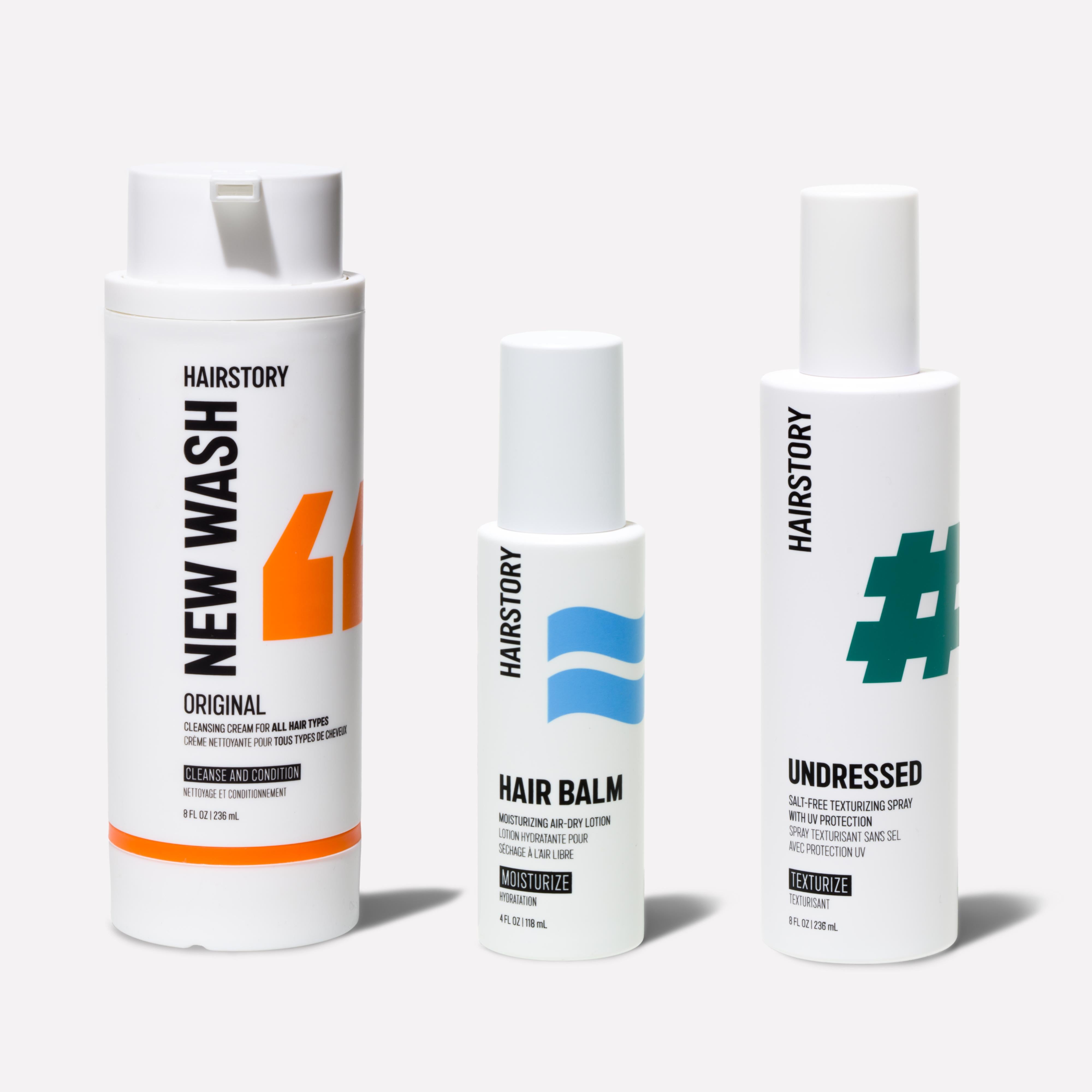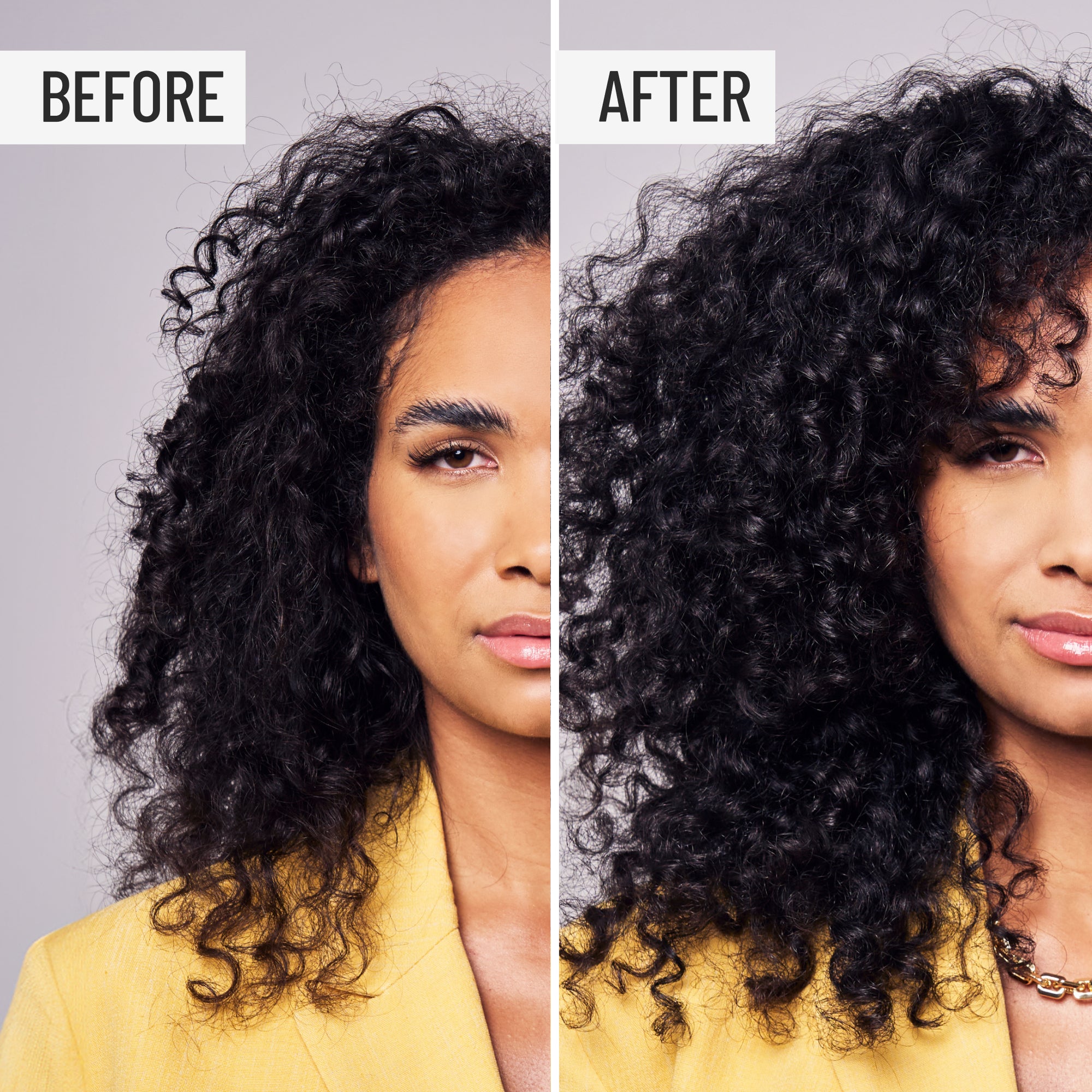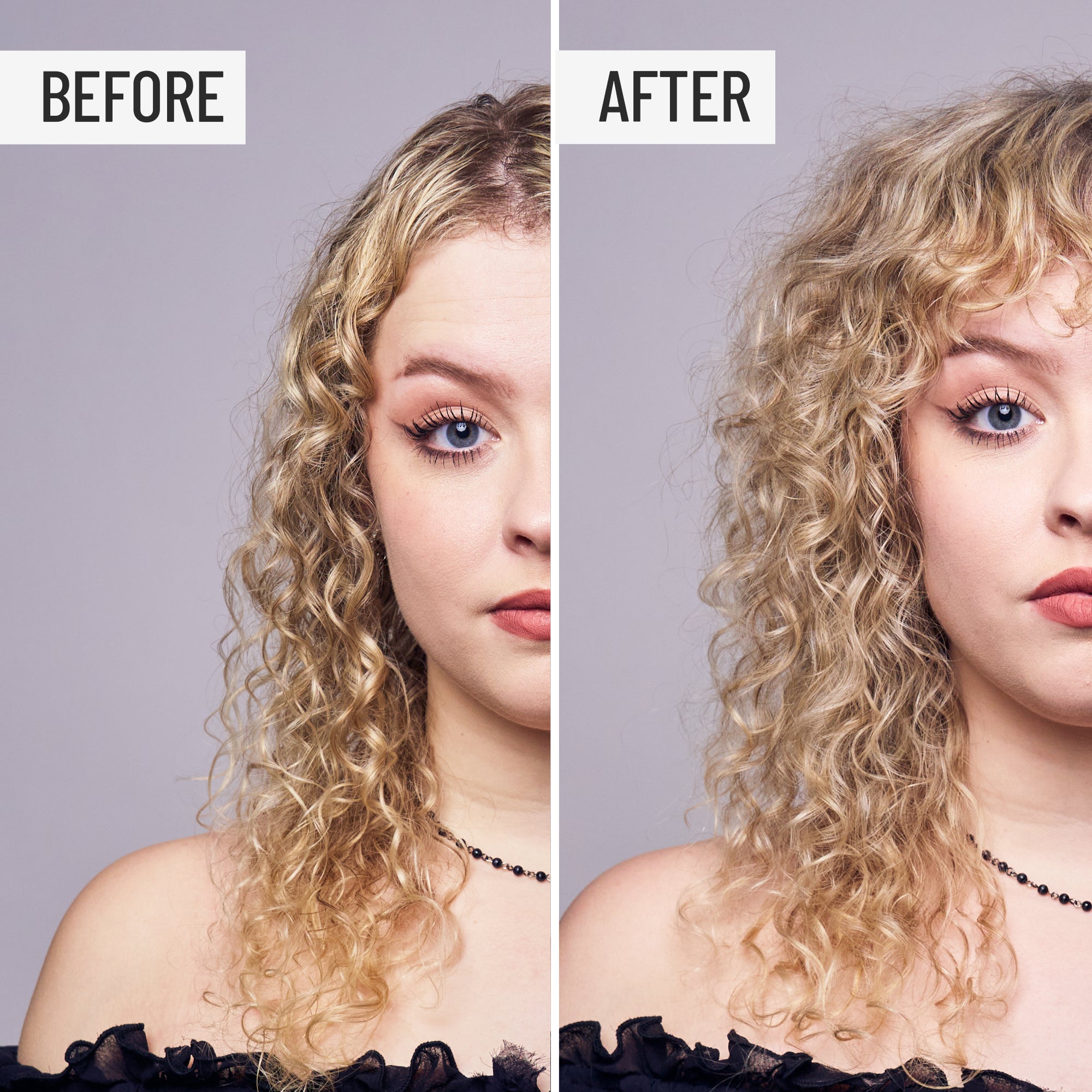THE TERM
Coined almost a decade ago by the curly hair community, co-wash stands for "conditioner-only hair washing," which involves relying solely on conditioner, and not shampoo, to keep hair moisturized, prevent frizzy curls, and avoid the dreaded dryness shampoo brings. Co washing curly hair may have been how this trend started, but now this hair cleansing method is becoming the norm for many different hair types.
THE TRUTH
Traditional shampoo does its job well--too well--stripping the hair of its natural oils. On the flip side, conditioner is engineered to stick to hair, smoothing, not cleaning it. Conditioner alone won’t remove impurities, pollutants, products – and even build-up from the conditioner itself. Similar to water only hair washing, hair follicles get clogged, optimal growth gets compromised, and co-washers are commonly advised to “bust build-up” weekly by using a clarifying cleanser – shampoo under another name that sends them back to squeaky-clean square one.
Moisture is often the primary concern, and co-washing helps manage this. The tradeoff is needing to use a clarifying shampoo from time to time.
THE MIDDLE GROUND
The hair industry’s response to disenchantment with its cash-cow shampoo was to create a new class of cleansers by dialing down the detergents, amping up the moisturizers, and providing an all-in-one option. Already wise to the perils of sulfate-based detergents, customers were introduced to a whole host of cleansing conditioner products, conditioning cleansers, low-poos, and no-poos – formulated with alternative molecules that promised a milder wash.
Thick, curly, or naturally dry hair can respond to any conditioner, labeled as cleansing or not. But the finer and oilier your hair is, the more cleansing power you may require.
Co-washing can, in principle, work well for most people, though fine, straight hair can become lank, and those with a naturally oily scalp or dermatitis may suffer if settling for a garden-variety conditioner without any cleansing ingredients whatsoever. Co-washing color-treated hair doesn’t strip pigment as traditional shampoo does, and it helps keep bleached, dry and damaged hair in better shape.
But, these substitutes still belong in the traditional detergent category and require the presence of conditioning agents to repair and replace what detergents damage and strip away. Users don’t feel this co-dependent tag-team because it’s so well masked. But it’s not so far removed from the old, feast/famine conditions of the traditional shampoo and conditioner model. Don’t be fooled: the term “sulfate-free surfactants” does not mean detergent-free.
Not washing hair with harsh chemicals can save your scalp from a host of problems. Check your labels for common forms of sulfates and their close “sul-fake” cousins. Co-washers should also avoid products containing silicones, which are often added to smooth cuticles and mask damage. These can build up on the scalp causing follicle problems, weigh down hair, and require shampoo to dissolve.
HOW TO CO-WASH
Learning how to co wash isn’t as simple as it might sound – the technique is just as important as your conditioner to remove build-up – and requires harnessing the force of water and vigorous fingertip massage. Don’t be too eager to add more days between washes to start; your scalp needs time to adjust – and it will, gradually.
- Fully soak your hair with warm water. If it’s very thick, separate it into several sections. Once saturated, squeeze out excess water.
- Squeeze out a generous amount of your co-wash. Thoroughly coat your hair and scalp; apply in sections if necessary.
- Massage the cream into your scalp with fingertips (not nails!) to exfoliate.
- Rnse thoroughly.
- Consider a second round if your hair is very dry. Apply traditional conditioner for maximum to moisturize your hair, especially at the ends.
- Rinse thoroughly.
To keep your scalp healthy and clean while co-washing hair, use a clarifying shampoo once every two to four weeks to remove build-up.
THE FUTURE (IS NOW)
The quest for a way to cleanse and condition simultaneously – and perform each function to the perfect degree – led some product companies to some dead ends (doing nothing for split ends). But by some miracle of modern technology combined with age-old methods, we were led to the holy grail of hair washing (a term our customers use in agreement).
The secret ingredient? The one we never included: Detergent. While it may be perfect for degreasing machinery and mopping floors, we advocate for avoiding contact with skin, a remarkably complex and sensitive organ that supports healthy hair. Humans didn’t tolerate greasy hair in the eons before liquid shampoo was invented less than a century ago; various oils were used instead as effective solvents for the natural (and it turns out essential) oils our bodies produce.
New Wash is a modern adaptation of pre-detergent practices. It relies on Aloe Vera juice in combination with oils of Jojoba, Peppermint, Evening Primrose, and Sunflower, and other saturated fats to act as a gentle solvent for excess oil on your hair and scalp. The formula melts away soil and other impurities and loosens dead skin cells; because it has none of the aggression of detergent, people who need daily washing can feel free to do so with no drying or frizzy consequences.
And if you still need more moisture? Go for a more conditioning version we call New Wash (Rich) or opt for a more effective leave-in method such as Hair Balm that also lets you experiment with texture when you’re styling.
THE COMPROMISE
What is there to lose? Well, to be honest, washing hair the New Wash way means giving up that signature shampoo experience: Suds. Even “low-poo” alternatives can’t muster the lather we’ve learned to love and look for as the signal for clean (in fact, it has little to do with it, but that’s another story).
But like all habits, we can replace old ones with better ones through experience and mindset. The next time you work your shampoo into a heady foam, think about how detergent is eroding your hair, chipping away at your cuticles, irritating your scalp, throwing off your seborrheic system’s delicate balance, and disrupting the skin’s acid mantle.
The next time you work your shampoo into a heady foam, think about how detergent is eroding your hair.
Then try New Wash. Think about how this rich creme, the epitome of responsible self-care, surrounds delicate hair strands with gentle cleansers and nature’s best moisturizers that treat your precious scalp with the respect it deserves. Foam? Who needs it? Your hair certainly doesn’t.































